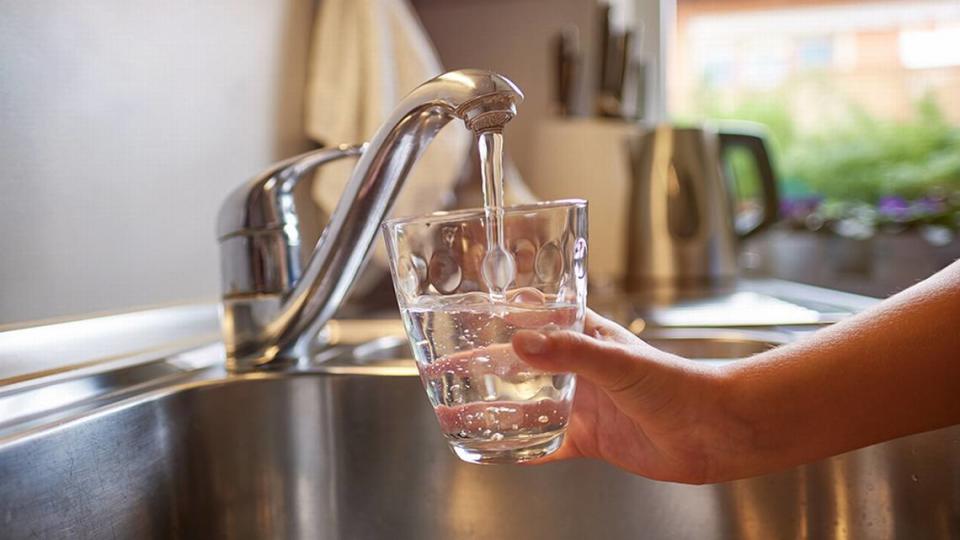Tap water in Kansas was tested for ‘forever chemicals.’ Here’s where they were found
Forever chemicals, also known as polyfluoroalkyl substances or PFAS, have been detected in recent years in drinking water in the Lawrence, Topeka, Manhattan and Wichita areas, according to a study published July 5 by the U.S. Geological Survey.
The federal agency collected tap water samples from 716 locations across the country, including water from public supplies and private wells. The agency modeled that data and found at least 45% of drinking water could contain at least one PFAS.
Some of the PFAS, which have been linked to health problems, found in Kansas water exceeded proposed limits. Those samples were taken from 2016 to 2021.
Measured in nanograms per liter, 16 PFAS were found in water samples from a public water supply in Lawrence and a private well near Manhattan. In one of three samples from the Wichita area, 43 PFAS were detected.
There are several types of PFAS, which are chemicals that have been used in consumer goods including nonstick cookware, water resistant clothing and fast food box lining. The compounds do not easily break down and have wound up in the air, water and soil.

PFAS in Kansas drinking water
In March, the Environmental Protection Agency announced a proposal to limit six types of PFAS, some of which are likely carcinogens.
“That means they are likely to cause cancer and there is no level of these contaminants that is without a risk of adverse health effects,” Colleen Flaherty, with the Environmental Protection Agency’s Office of Science of Technology, said during a public hearing on PFAS regulation in May.
The USGS research showed that some of those six chemicals were present in drinking water in Kansas at levels that exceeded the proposed EPA limits.
For example, a private well in the Wichita area had a PFOS reading of five nanograms per liter and a public supply in Lawrence had 9.3. The proposed limit is four. A sample from a public supply in Topeka had a reading of two PFHxS while the proposed limit is one.
There are currently no enforceable limits at the federal level.
Kelly Smalling, a research hydrologist and co-author of the USGS study, said PFAS were more often detected in urban and suburban areas.
“We’re hoping that this study can help members of the public to really understand their risk of exposure, but also inform policy and management decisions regarding testing and treatment options for drinking water,” Smalling said, adding that risk varies person to person.
She encouraged anyone with concerns to reach out to local health officials.
Testing for PFAS
Megan Lovely, a spokeswoman for the City of Wichita, said they began testing for PFAS in 2021 as a proactive measure.
Lawrence does not routinely monitor PFAS, but will begin to as new EPA guidelines go into effect, said Trevor Flynn, assistant director of environment, health science and treatment operations for the City of Lawrence. Those results are expected to be part of a consumer confidence report published next May.
Elaine Giessel, chair of the Kansas chapter of the Sierra Club, said the USGS findings suggest that PFAS chemicals are at concerning levels in some drinking water in Kansas.
“Sierra Club strongly supports testing of private domestic wells in addition to public water utilities, but there clearly aren’t enough analyses in Kansas to predict which communities in our state are impacted,” she said in a statement.
“Sierra Club supports the recommendation of the USGS to continue point-of-source tapwater monitoring for all drinking water sources, especially in the underserved communities.”
While the EPA considers PFAS standards, Giessel said the state “should be taking all available measures to prevent more PFAS contamination, test and identify contaminated water sources, and educate state residents about the scope of the problem in Kansas.”
The Kansas Department of Health and Environment said it has a voluntary monitoring program for public water supply systems.
Matt Lara, a spokesman for the department, said the agency also provides technical assistance when a detection is observed, financial assistance for the construction of water treatment systems with PFAS detections and training for water system operators on the EPA’s proposed rule.

